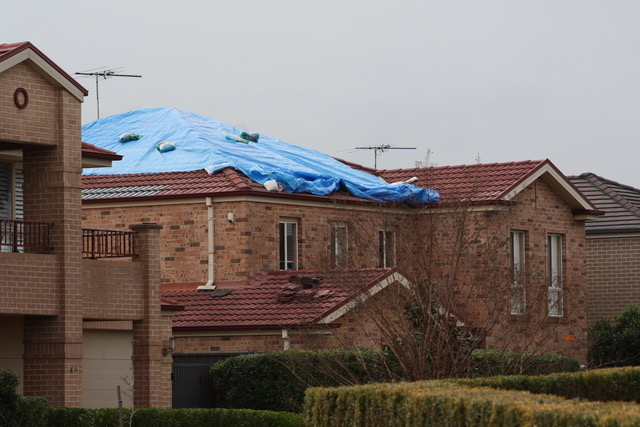It’s been one month since Stormseal Managing Director Matthew Lennox revisited Kellyville to find hundreds of residents still living under tarps in storm-damaged houses. That trip marked 90 day after a massive hail event devastated North-West Sydney in February 2017. 120 days later, and the Hills Shire is only now seeing a majority of houses repaired and tarp-free.
Attending to thousands of insurance claims after a wild weather event is no small feat for insurers, local contractors and the SES. As of March 22nd SES crews in Kellyville had entered ˘ days straight of being fully operational, having responded to 1,794 calls for help.
Mr Lennox says that the insurers, builders and SES should be commended for their tireless work, and to make their lives easier he believes we need to make one very important change in future disaster response – ditch the tarps.
“The insurers and the SES have done a fantastic job. It’s great to see that the majority of houses are now repaired. But what this whole recovery process shows is that we have a gap in Australia in how we respond to disasters. The temporary protections we use while residents wait for permanent repairs are just not good enough.”
“As demonstrated here in Kellyville, recovery is often – at least – a 12 to 16 week process. In Australia we often see repetitive storm activity i.e. one storm after the other in a very short period of time. If we look at Kellyville as a case scenario the following month of March was one of the wettest in recent history with 26 days of rain.
It’s this repetitive storm activity which blows tarps off houses, increases property damaged and effectively ‘re-sets’ the insurance claim process blowing out the re-construction / recovery timeline. This causes terrible anxiety for the community, extra work for all those involved in the disaster response and increases the overall financial cost of the storm event.” Put simply, tarps don’t provide adequate protection for families to live under for 120 days.
“It’s this problem, seen over decades in my work as a builder, which drove me to find a real solution, the solution of Stormseal. It only goes on once and won’t blow off in bad weather. It’s purpose built to provide solid, reliable, protection. It’s just as quick to put up as a tarp and it stays in place, heat-sealed tight like a drum, providing safety, security and peace of mind for up to 12 months while permanent repairs are arranged.”
“We need to help our communities become more disaster resilient. It’s time we said goodbye to inadequate tarps and made a sealed, secure roof the new standard for how people live in the 120 days of post-storm recovery.”











